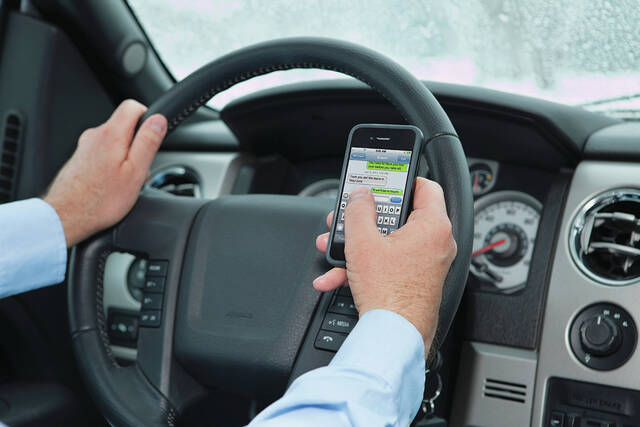
The Insurance Institute for Highway Safety says using a cell phone while driving increases crash risk. (File photo)
Few likely imagined that a day would come when a person could communicate, browse the internet, take photos and videos, play music, and much more all from a device small enough to store in a pants pocket. But that’s just what one gets with a smartphone. These amazing devices have transformed how people engage in everyday life. Although smartphones have their upside, there are disadvantages to the connectivity they provide – including the threat phones pose when used while behind the wheel.
Anything that causes a driver to take his or her eyes off of the road, even if only for a few seconds, can prove disastrous. And smartphones have proven particularly distracting for drivers. In fact, according to Franciscan Health, one in four accidents occur because a driver was using a cell phone, hands-free or not. Distracted driving contributed to 3,522 deaths and 362,415 injuries in the United States in 2021, the most recent year for the National Highway Traffic Safety Administration’s published estimates. More than 20 percent of respondents in a 2022 NHTSA survey admitted to using at least one smartphone-based distraction, such as social media, texting or video calls, while driving.
Each time a driver gets away with using a phone without incident while behind the wheel, he or she may feel like it is no big deal. However, there is very real danger in doing so. Here are some facts that highlight how dangerous using a smartphone while driving can be.
· The National Safety Council has found drivers using hands-free and handheld cell phones fail to see up to 50 percent of the information in their driving environment. This is known as “inattention blindness.”
· The Insurance Institute for Highway Safety says using a cell phone while driving increases crash risk, as researchers have consistently linked texting or manipulating a cell phone to increased risk. When the IIHS monitored drivers who frequently use cell phones while driving for one year, those drivers had the highest rates of near crashes and crashes.
· Using driving simulators or instrumented vehicles, various analyses have found typing or reading text messages significantly slowed reaction time and increased lane deviations. It also increased the length of time drivers looked away from the roadway. The NSC says drivers using cell phones had reaction times slower than drivers impaired by alcohol at .08 blood alcohol concentration.
· When a person sends a text message or reads a message, it takes his or her eyes off the road for five seconds. Going 55 miles per hour while texting is like driving the length of a football field with one’s eyes closed.
Although smartphones are convenient, they should be stored out of reach while driving to limit the temptation of use.
